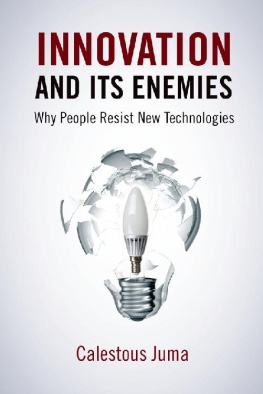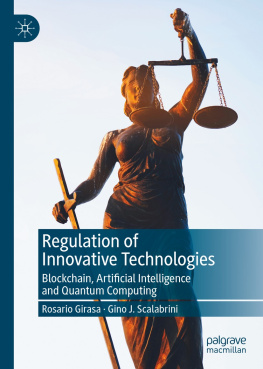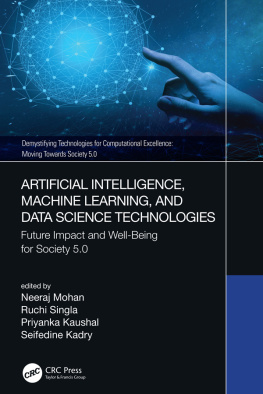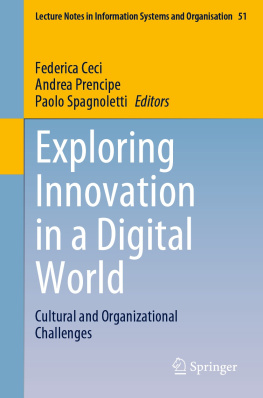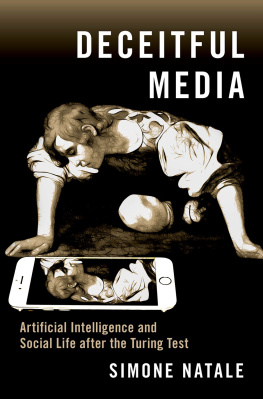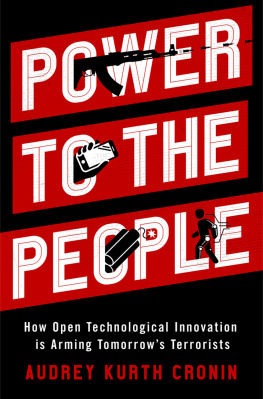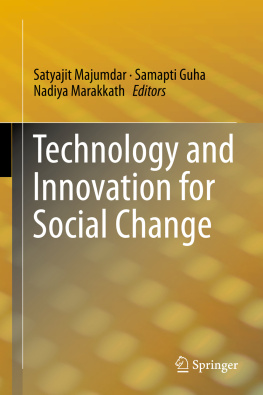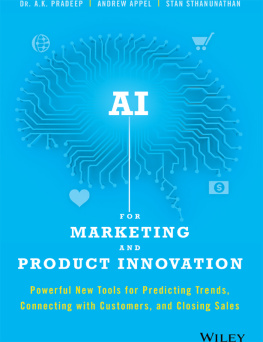INNOVATION AND ITS ENEMIES
A must read for anyone who wishes to engage in disruption themselves.
Sir Richard J. Roberts
Nobel Laureate in Physiology or Medicine and Chief Scientific Officer, New England Biolabs
A very well-researched account of innovation and its enemies, not to be missed by scholars and the public, both for historical perspectives and readiness for future innovations.
Professor Yongyuth Yuthavong
Former Deputy Prime Minister and Minister of Science and Technology, Thailand
This book is a timely one. We owe a deep debt of gratitude to Dr. Calestous Juma for his labor of love for the progress of human wellbeing through scientific innovations.
M. S. Swaminathan
World Food Prize Laureate, and Founder Chairman, M. S. Swaminathan Research Foundation
This is a good read and an invaluable reference work for those working on new technologies, especially those needed to meet the grand challenges of the twenty-first century.
Lord Alec Broers
British House of Lords and Former Vice Chancellor of the University of Cambridge
An excellent analysis of forces that oppose new innovative products and services. A must read for entrepreneurs, policy framers and academicians.
N. R. Narayana Murthy
Founder, Infosys
Jumas insight is to see how the appropriate deployment of political capital and a deeper understanding of how the average citizen can confuse hazard and risk can make crucial differences to outcomes. Scientific and political leaders need this book.
Ian Blatchford
Director and Chief Executive of the Science Museum Group, the United Kingdom
Innovation and Its Enemies
Why People Resist New Technologies
Calestous Juma


Oxford University Press is a department of the University of Oxford. It furthers the Universitys objective of excellence in research, scholarship, and education by publishing worldwide. Oxford is a registered trade mark of Oxford University Press in the UK and certain other countries.
Published in the United States of America by Oxford University Press
198 Madison Avenue, New York, NY 10016, United States of America.
Oxford University Press 2016
All rights reserved. No part of this publication may be reproduced, stored in a retrieval system, or transmitted, in any form or by any means, without the prior permission in writing of Oxford University Press, or as expressly permitted by law, by license, or under terms agreed with the appropriate reproduction rights organization. Inquiries concerning reproduction outside the scope of the above should be sent to the Rights Department, Oxford University Press, at the address above.
You must not circulate this work in any other form and you must impose this same condition on any acquirer.
Library of Congress Cataloging-in-Publication Data
Names: Juma, Calestous, author.
Title: Innovation and its enemies : why people resist new technologies /
Calestous Juma.
Description: First edition. | Oxford ; New York : Oxford University Press, 2016. |
Includes bibliographical references and index.
Identifiers: LCCN 2015043807 (print) | LCCN 2015048125 (ebook) |
ISBN 9780190467036 (hardcover : alk. paper) |
ISBN 9780190467043 (Updf) | ISBN 9780190467050 (Epub)
Subjects: LCSH: Technological innovationsHistory. | Technology and civilization. | TechnologySocial aspects.
Classification: LCC HC79.T4 J8178 2016 (print) | LCC HC79.T4 (ebook) |
DDC 338/.064dc23
LC record available at http://lccn.loc.gov/2015043807
To my son Eric
Contents
This book has benefited from many people who have offered me guidance, research, insights and comments. The book was written over sixteen years, and so it will not be possible to acknowledge everyone who supported me over the period. In fact, I can trace some of the ideas in the book back to the early 1980s when I worked under the late Nobel Peace Prize winner Wangari Maathai at the Nairobi-based Environment Liaison Centre (ELC). The preceding oil crises and environmental concerns had inspired considerable interest in clean energy, which culminated in the convening of the United Nations Conference on New and Renewable Energy Sources in Nairobi in 1981. It became clear then that seemingly basic ideas such as tree planting encounter numerous social obstacles. While at ELC my thinking about technology and the environment was shaped by the guidance of Gary Gallon and the inspirational leadership of Mostafa Tolba, then Executive Director of the United Nations Environment Programme.
Along my intellectual journey I benefited immensely from inspirational support, suggestions, and comments from many colleagues. The list is too long to be exhaustive here, but I will mention just a few. They include Philipp Aerni, Bruce Alberts, Graham Allison, Lewis Branscomb, John Browne, Norman Clark, Abdallah Daar, Henry Etzkowitz, Leonel Antonio Fernndez, Michael Fischer, Archon Fung, Kelly Sims Gallagher, Val Giddings, Alexandra Golikov, Zakri Abdul Hamid, Mohamed Hassan, John Holdren, David King, Victor Konde, Sheldon Krimsky, Kiyoshi Kurokawa, Yee-Cheong Lee, Francis Mangeni, Franklin Moore, Venky Narayanamurti, Joe Nye, John Ouma-Mugabe, Frederick Pardee, Peter Raven, Martin Rees, Andrew Reynolds, Matt W. Ridley, John Ruggie, Jeffrey Sachs, Vicente Sanchez, Barbara Schaal, F.M. Scherer, Susan Sechler, Cyriaque Sendashonga, Raj Shah, Gustave Speth, Kirsten Stendahl, Chikako Takase, Eric Topol, Harold Varmus, Charles Vest, Thomas Yongo, Yongyuth Yuthavong, and Dorothy Zinberg.
A book of this breadth can only be completed with continuous sources of inspiration through words and works. For this I am thankful to Martin Abraham, Aggrey Ambali, Allison Archambault, W. Brian Arthur, Andrew Barnett, Martin Bauer, John Beddington, Sujata Bhatia, Rosina Bierbaum, Johan Bodegrd, John Boright, Brantley Browning, Thomas Burke, Gordon Conway, Paul David, Mateja Dermastia, Elizabeth Dowdeswell, Nina Fedoroff, Deborah Fitzgerald, Susanne Freidberg, Lynn Frewer, Sakiko Fukuda-Parr, Frank Geels, Kimo Goree, Philip Greenish, Brian Grottkau, Anil K. Gupta, Eric von Hippel, Heping Jia, Donald Kaberuka, Travis Kalanick, Yusuf Keshavjee, Jennifer Kuzma, Gary Marchant, R. A. Mashelkar, Janet Maughan, Robert May, Erik Millstone, Joel Mokyr, Romain Murenzi, Bernarditas de Castro Muller, Adil Najam, Nicholas Negroponte, Alan Olmstead, Owen Paterson, Samantha Power, Fernando Quezada, Atta ur Rahman, Adrian Randall, Fil Randazzo, Firoz Rasul, Gregory Robbins, Nathan Rosenberg, Marc Saner, Peter Johan Schei, Bruce Scott, Joseph Schwab, Rinn Self, Lecia Sequist, Ismail Serageldin, Peter Singer, Chris Smart, M. S. Swaminathan, and Caroline Wagner.
I am very grateful to my colleagues on the jury of the 1 million Queen Elizabeth Prize for Engineering under the inspirational leadership of Alec Broers for their practical insights into the dynamics of technological innovation. I want to thank Frances Arnold, Brian Cox, Lynn Gladden, Reinhard Huettl, John Hennessy, Narayana Murthy, Hiroshi Komiyama, Christopher Snowden, Choon Fong Shih, Dan Mote, Viola Vogel, and Paul Westbury.
A few people have read the manuscript, and I am grateful for their comments and additional information. They include Klaus Ammann, Alison Van Eenennaam, Jamal Elias, Elliot Entis, Robert Frosch, Anne Glover, Robert Langer, Dutch Leonard, Silas Lwakabamba, Robert Paarlberg, and J. Craig Venter. Devon Maylie provided me with diligent editorial support and invaluable comments.

